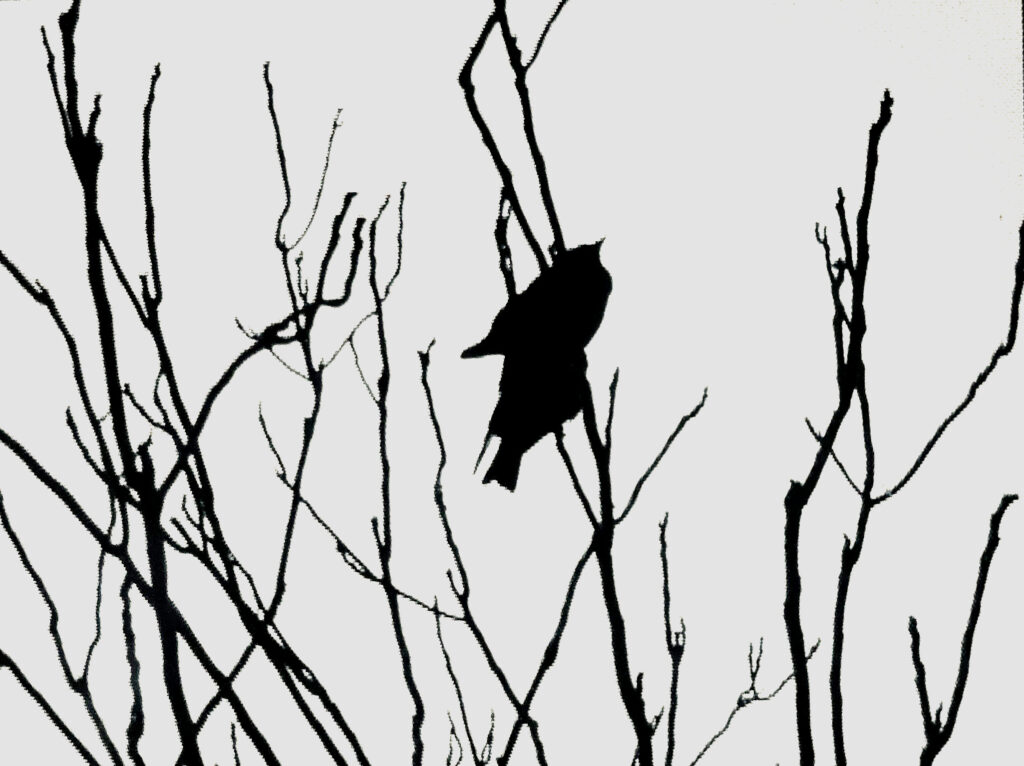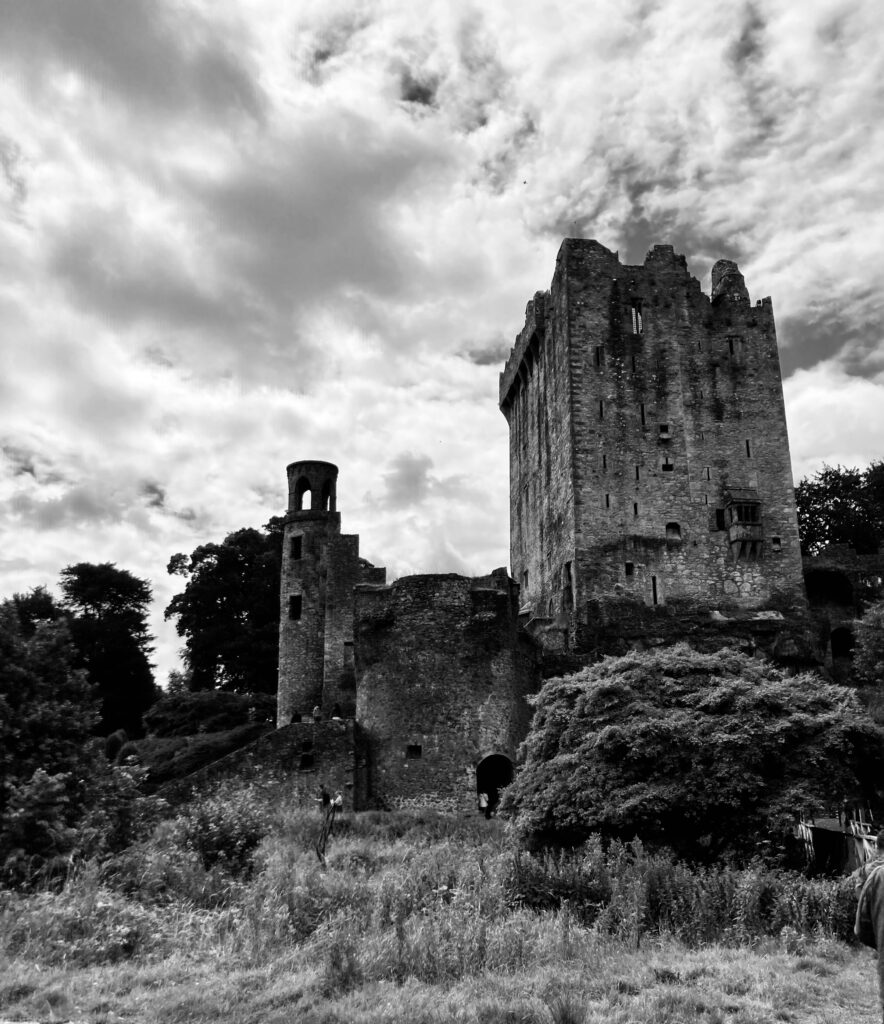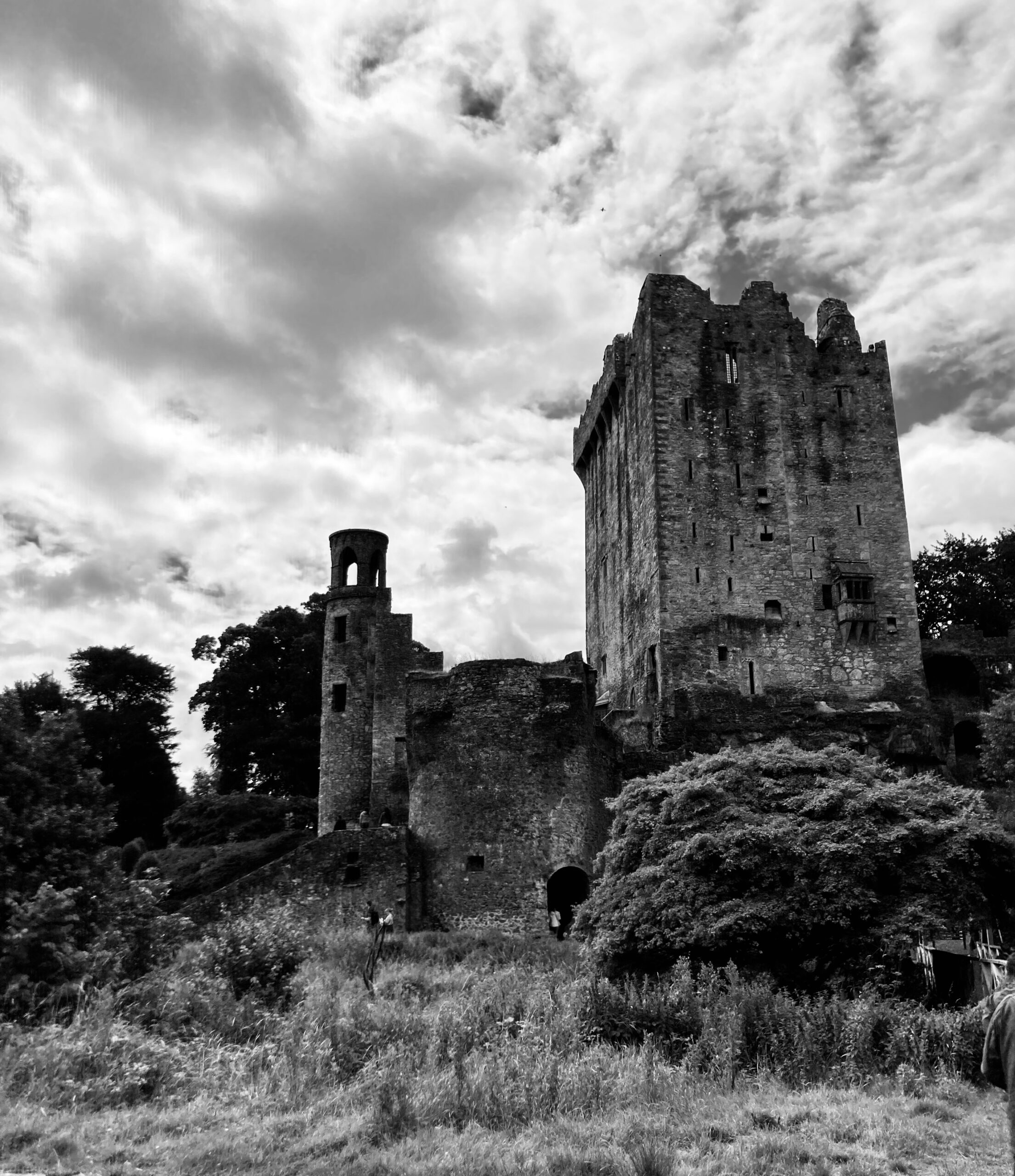I had the incredible opportunity to travel to the Republic of Ireland this summer, where I was dumbstruck by the natural beauty and community of this small nation. When it comes to historic sites, I am not intrigued by ancient styles of architecture nearly as much as natural phenomena that have existed and evolved over millennia. Instead of spending my days walking among the towering spires of Victorian churches, I find looking across a bay many times invaded by the Vikings, or rolling mountains of green covered in free, grazing farm animals, to be much more interesting. However, Ireland’s countless medieval castles nestled in mountainous terrain are certainly beautiful. I spent my trip admiring the mountains, lakes, and rivers (and the occasional crumbling castle) that make up the island.
Ireland’s stunning landscape was first visible from an aerial view as our plane flew circles around Dublin until thunderstorms cleared. Bright green fields speckled with small towns surrounded massive lochs. The sun was shining—a rare occurrence in Ireland. Once we landed, we spent the day exploring the bustling city of Dublin, one of only three cities in the whole country. Here, I learned the history of the city and the Guinness company, and visited Trinity College’s historic Trinity Library, the filming site for the Hogwarts library in Harry Potter.
After Dublin, I visited the towns of Glendalough and Waterville, and the joyous cities of Waterford and Cork. Glendalough’s monastic ruins, remnants of a site attacked by the Vikings numerous times, were filled with beautiful watchtowers and gravestones covered in flowers, grasses, and vines. Our visit to the windy and cold seaside town of Waterville was short but sweet. The lapping waves and, of course, mountains, created a beautiful landscape. In Waterford, I visited the Waterford Crystal Factory, where locals shared the craft of glassmaking, from the melting to the glassblowing, the etching to the polishing. The city of Cork was lively and full of history, with extremely narrow cobblestone streets and musicians on every block. According to Danny, a Belfast native I got to know on my trip, Irish people who aren’t from Dublin consider Cork to be the true capital of Ireland.
I traveled next to the seaside town of Cobh, which has a fascinating history. This town was the final place the Titanic stopped before it met its doom, and is also home to a famous memorial in honor of those who lost their lives in the sinking of the RMS Lusitania in 1915. I also traveled to the village of Blarney, home of the famous Blarney Stone. Legend has it that one who climbs the narrow, winding stone staircase to the top of the castle and kisses this special stone will be awarded the “gift of the gab”—in other words, confident and clever speech. Famous people who have kissed the stone include Winston Churchill, Mick Jagger, and
Ronald Reagan. The castle grounds also include a Poison Garden, which is an educational garden that has existed since the establishment of the castle in 1446. This garden contains plants such as opium poppy, nightshade, and poison hemlock.
The next stop on our trip was the town of Killarney. A popular vacation spot for the Irish, Killarney was full of small shops, pubs (well, virtually every place in Ireland has those), and large, open areas for music and entertainment. The Bourn-Vincent National Park was breathtaking, with huge mountains looming over a loch. Even watching the elderly horse-and-buggy driver hit on my grandma was fun. In addition to unbelievably picturesque mountains, Killarney is also the home of the incredible musical group Gaelic Roots, which features singers, musicians, and traditional Irish dancers. Their two-hour show was truly unforgettable.
The Ring of Kerry was our next adventure. This approximately 110-mile drive around the Iveragh Peninsula in southwest Ireland’s County Kerry truly showcases the agriculture and preserved greenery of the nation. There are strict restrictions on property construction in Ireland to prevent shorelines and mountain views from being obstructed by millionaires’ mansions. Instead, there are only occasional farmhouses and thousands upon thousands of free-roaming livestock in the mountains. We stopped at the Ladies’ View, a gorgeous view of Killarney’s lakes that was named after Queen Victoria’s ladies-in-waiting from their visit in 1861. We also stopped in coastal Glenbeigh, where we encountered locals selling “Holy Water”—moonshine with extremely high alcohol content—by the shore. After returning from the Ring of Kerry, we visited Killarney’s traditional Muckross Farms, which sent me back in time with its food and customs. Practices still used at this farm include hand-churning butter, heating using peat as fuel, and farming with horse-drawn equipment. We also traveled to a very small seaside village named Sneem, where we admired its rocky river and local charm.
After learning about the history of the first transatlantic flights and whiskey-laced Irish Coffee at the Flying Boat Museum in Foynes, the final destination of our trip were the towering Cliffs of Moher. Filmed as the Cliffs of Insanity in The Princess Bride, and part of a scene in Harry Potter and the Half-Blood Prince, these 702-foot tall cliffs make you feel like you’re standing at the edge of the Earth. They are one of the fifty international destinations on CNN’s Natural Wonders Bucket List, and one of the most popular destinations in Ireland. The site also has very little infrastructure, with just a few shops and a visitor’s center built into a hillside, and grazing cows dotting the landscape instead of buildings (some of them were precariously close to the edge of the cliffs…). Our trip ended with a stop in the town of Limerick before our arrival back in Dublin. While every place I visited on the island was unique and special in its own way, one facet of Ireland was present in every stop: craic.
Anywhere you go in Ireland, you’re bound to experience craic. Pronounced “crack,” this is a part of the nation’s culture that makes every foreigner cackle with laughter when they hear the word. Craic is an experience of togetherness, shared culture, conversation, and liveliness. Different people believe in different levels of craic, but here are the seven levels according to Danny:
- Good craic: just beginning the evening, music playing, drinks going around
- Mighty craic: the noise is rising and the dancing has begun
- Savage craic: the pub is truly “full” by now—the number of customers has exceeded the maximum limit by about fifty
- Deadly craic: the pub is packed like a sardine can and the air is thick with laughter and loud music
- Craic to the ninety: everyone has their arms around one another in a large, dancing circle, as people experience the most possible craic they can
- Minus craic: the day after “craic to the ninety”
- Craic vacuum: so worn out from the previous evening that one seems to suck the joy out of everyone around them
On a rare warm evening in the city of Cork, where the streets are narrow and clean and the air smells of delicious food, I witnessed some great craic take place. I turned to my left and saw a red-faced man singing loudly in quite the impressive baritone voice. Despite it being early in the evening—barely 6 pm—it was clear he was already on his way to deadly craic. He stood and waved broadly at me and my companions, and then singingly yelled, “Welcome, newcomers!” Thirty minutes later, as I walked by a young musician singing Coldplay’s “Yellow” with a guitar and microphone, the same red-faced man stood by and danced. Another walked towards the two on the street, waving his arms over his hand, dancing. With a broad grin on his face, he and the other dancing man hugged and began dancing together. Throughout the rest of the evening, the first man seemed to be just about everywhere at once in the city, popping up outside of every establishment and treating the whole city to an improvised concert. I was also able to experience lively music and dance during an evening in Killarney when I listened to multiple musical groups in one evening, walking through the town that never seemed to get dark.
These incredibly joyous days in Ireland were some of the best of my life. In addition to the natural beauty, the community was astounding, and I found people in both the small towns and larger cities to be exceptionally kind. To be immersed in a place completely surrounded by green landscape and awe-inspiring scenery reminds me that true beauty does not need to be created by people—it already exists, and must remain untouched for it to flourish.
Please visit the photo gallery pages in the center of this issue of The Tattler for colored pictures of Glendalough’s Monastic Ruins, the Ring of Kerry’s mountains and lakes, and the majestic Cliffs of Moher.



